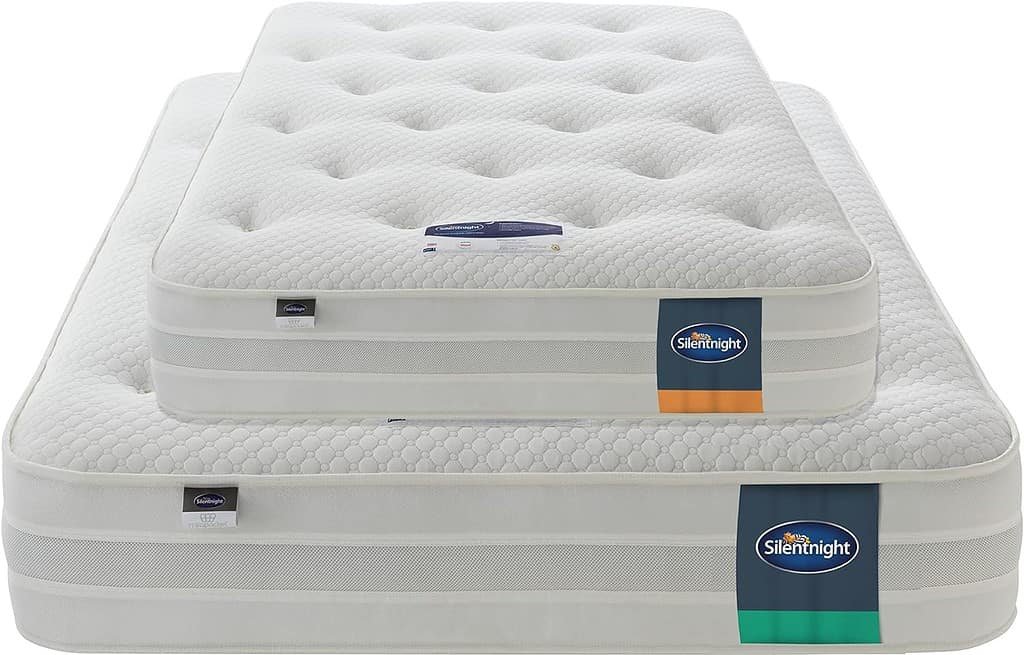How to Choose the Best Pillow for Your Bed
Finding the best pillow can significantly improve sleep quality, as it helps maintain the natural alignment of the head, neck, and spine. It is essential to consider factors such as individual preferences, sleeping position, and mattress type. Many pillow types are available, making it difficult to find the right fit. Selecting a pillow that complements one’s mattress enhances comfort and support throughout the night. Understanding various pillow materials, firmness levels, and loft heights is vital in decision-making. A careful and well-informed choice leads to a restful and rejuvenating sleep experience for years.
Understanding Pillow Types
When choosing the best pillow for your bed, it’s essential to understand different pillow types to suit your personal preferences and specific needs. This section explores popular pillow types, including Memory Foam Pillows, Latex Pillows, Feather and Down Pillows, and Cooling Gel Pillows.
Memory Foam Pillows
Memory foam pillows are quite popular due to their ability to mould and conform to your head and neck shape. These pillows provide excellent support and can help with proper spinal alignment. They’re particularly suitable for side and back sleepers who need extra support. One downside is that memory foam can retain heat, so it might not be the best choice for hot sleepers.
Latex Pillows
Latex pillows are made from natural or synthetic latex material. They offer a similar contouring effect to memory foam but with a bouncy feel. Latex pillows are known for their durability and natural resistance to dust mites, mould, and mildew. They tend to be firmer than memory foam, making them suitable for those who prefer more substantial support. Latex pillows are available in various loft levels, accommodating multiple sleep positions and preferences.
Feather and Down Pillows
Feather and down pillows are filled with a blend of feathers and down clusters, providing a soft and lightweight feel. These pillows are incredibly adjustable and easily shaped to suit your sleeping style. Feather and down pillows are known for their excellent temperature regulation, helping to keep you warm on cool nights and cool on warm nights. However, they may not provide sufficient support for sleepers with neck or back pain and require regular fluffing to maintain their loft.
Cooling Gel Pillows
Cooling gel pillows are designed for hot sleepers who struggle with nightly overheating. These pillows often feature a memory foam or latex core infused with cooling gel beads or layers that help dissipate heat and promote airflow throughout the night. Cooling gel pillows come in various designs, including contoured shapes for targeted neck and head support. They can be a great addition to your sleep setup if you’re after a pillow that keeps you cool and comfortable all night.
Assessing Your Sleep Position
When choosing the best pillow for your bed, it is essential to consider how you sleep. Your preferred sleep position plays a significant role in determining the ideal pillow for you. This section will discuss the pillows suitable for side, back, and stomach sleepers.
Side Sleepers
For side sleepers, it is crucial to maintain proper spinal alignment during the night. A thicker, firmer pillow will be beneficial in supporting the head and neck, thus preventing any strain. Memory foam or latex pillows are popular for side sleepers due to their contouring abilities and pressure relief. Also, placing a pillow between the knees can help alleviate lower back pressure.
Back Sleepers
When it comes to back sleepers, maintaining the spine’s natural curve is vital. A pillow of medium firmness and thickness will provide adequate support for the head, neck, and shoulders. Materials such as memory foam, latex, or a combination of down and feathers can benefit back sleepers. It’s worth considering a pillow with an ergonomic design or additional neck support for optimal spinal alignment.
Stomach Sleepers
Stomach sleepers typically require flatter, softer pillows to prevent excessive neck strain and discomfort. Down alternative or low-loft memory foam pillows suit stomach sleepers. As this sleep position can also put pressure on the lower back, placing a thin pillow under the hips can help to maintain proper spinal alignment. Considering your preferred sleep position is crucial when choosing the best pillow for your mattress. Whether you are a side, back, or stomach sleeper, finding the right pillow will ensure a comfortable and supportive night’s sleep.
Considering Your Mattress Firmness
When looking for the perfect pillow to complement your mattress, it’s essential to consider your mattress’s firmness.
People with a firm mattress might find that a softer pillow suits their needs better. This is because the pillow needs to adapt to the pressure of the weight of your head when lying on a firm surface in your starting sleep position DreamCloud. A soft pillow can help provide the necessary support and comfort for your head and neck while you sleep.
In contrast, if your mattress is softer, you might need a firmer pillow to align your head and neck properly. A firmer pillow provides the support your head and neck need when they sink into a softer mattress, which prevents the risk of straining your neck or experiencing discomfort during the night. It’s also worth considering any personal preferences or specific health conditions that could influence your choice of pillow firmness. For example, if you suffer from neck or back pain, you may require a different level of support than someone without these issues.
Allergies and Sensitivities
Individuals with allergies or sensitivities should also consider the materials used in the pillow’s construction when searching for a pillow that suits their mattress. The right pillow ensures a good night’s sleep and reduces the likelihood of allergy symptoms. Hypoallergenic pillows are an excellent choice for people with sensitivities.
These pillows typically use materials like foam, latex, or down alternative fibres less likely to harbour potential allergens1. Memory foam and latex are resistant to dust mites, mould, mildew, and other allergens, making them suitable options2.
When shopping for a pillow, it’s crucial to consider the cover material: natural cotton, bamboo-derived textiles, or Tencel(2). These materials are allergy-friendly and offer additional benefits like temperature regulation and moisture-wicking capabilities. Keep an eye out for pillows labelled as dust mite-proof or allergen-proof. These pillows often have specially designed covers that prevent allergens from entering and escaping the pillow.
Sources:
https://www.sleepfoundation.org/best-pillows/best-hypoallergenic-pillows ↩
https://www.sleepfoundation.org/best-pillows/best-pillow-for-allergies ↩ ↩2
Maintenance and Durability
When choosing the best pillow, considering maintenance and durability can lead you to a better decision.
Washing
Regular cleaning is essential to keep your pillow fresh and healthy. Most synthetic and down-filled pillows are machine washable, ensuring ease of care. Be sure to follow the manufacturer’s guidelines for proper cleaning, as specific instructions might vary depending on the material. On the other hand, foam pillows often require spot cleaning or airing out to remove odours and maintain freshness. Remember to use a pillow protector to prolong the life of your pillow and minimise the need for frequent washing.
Lifespan
The lifespan of a pillow varies depending on the materials used and the quality of construction. Generally, down and feather pillows last longer, often providing comfort for up to 5-10 years. Synthetic pillows, such as polyester-fill or poly-fibre, have a shorter lifespan, usually around 2-4 years. Foam pillows, like memory foam or latex, can last 3-8 years, depending on their quality. It’s essential to monitor the condition of your pillow and replace it if it no longer offers the proper support and comfort.
Frequently Asked Questions
What type of pillow is best for neck pain?
When alleviating neck pain, the best option is a pillow that provides proper support and alignment. The Tempur-Pedic TEMPUR-Neck Pillow (Amazon Link) is popular as its contoured design helps maintain the neck’s natural curve while sleeping.
How do I pick the correct pillow height?
Choosing the right pillow height depends on your preferred sleeping position. A medium-height pillow is advised for back sleepers, as it supports the spine’s natural curve. Side sleepers should choose a higher pillow to maintain head and neck alignment. Stomach sleepers need a low, flat pillow to avoid straining the neck.
Which pillows are suitable for side sleepers?
Side sleepers require a pillow with enough loft and firmness to prevent the head from sinking and causing neck strain. A pillow that can be adjusted for optimal support, like the Lagoon Fox Pillow, is an excellent choice for side sleepers.
How can I find a pillow for improved hand and arm circulation?
A ‘body pillow’ pillow can help enhance hand and arm circulation for side sleepers. Body pillows offer additional support for the limbs, decreasing pressure points that can disrupt blood flow. Place the body pillow between your knees and hold it with your top arm to create optimal alignment while sleeping.
Do adjustable pillows help with tailored support?
Yes, adjustable pillows are beneficial for those who need tailored support. They typically come with removable layers or an adjustable fill that allows you to customise the pillow height and firmness according to your preferences and sleep position. The Lagoon Fox Pillow is an example of an adjustable pillow that offers tailored support.
Are memory foam or down alternative pillows better?
Both memory foam and down alternative pillows provide different benefits, and the choice depends on your preference and needs. Memory foam pillows, like the Layla Memory Foam Pillow, offer excellent contouring, pressure relief, and support. Down alternative pillows provide a soft, fluffy feel and are hypoallergenic, making them more suitable for those with allergies or sensitivities.



